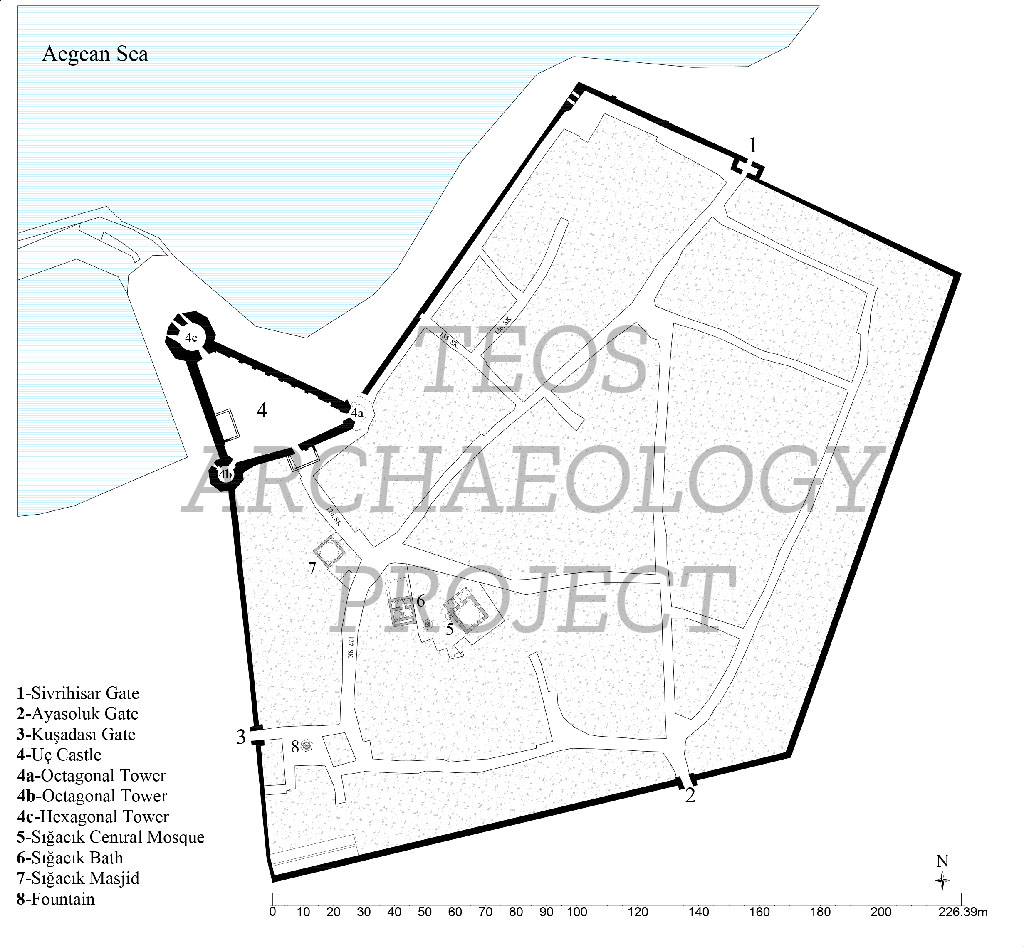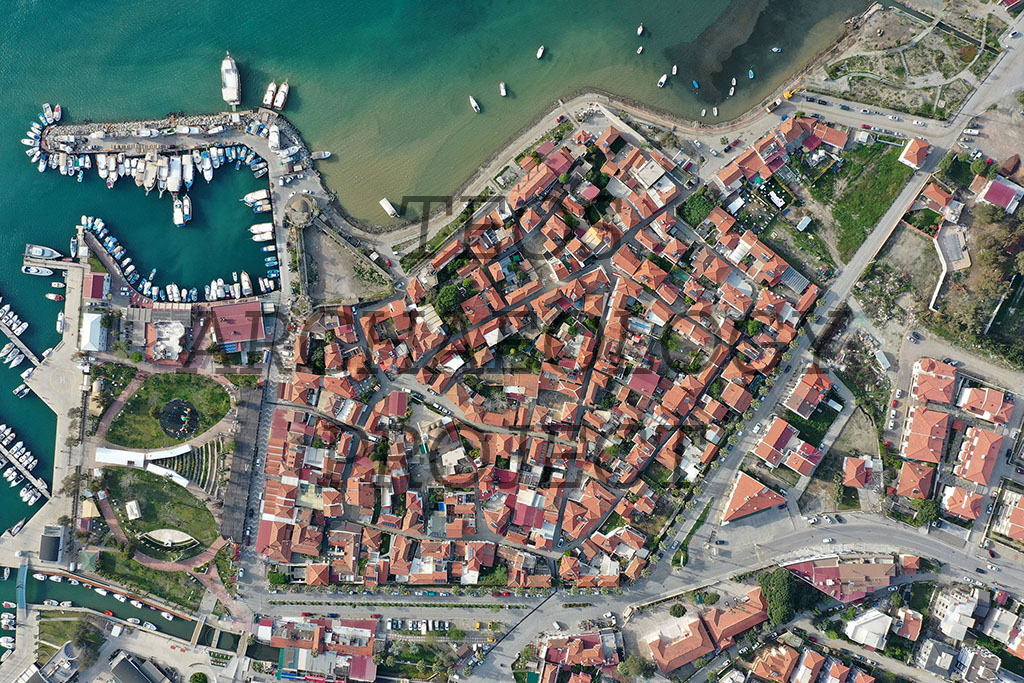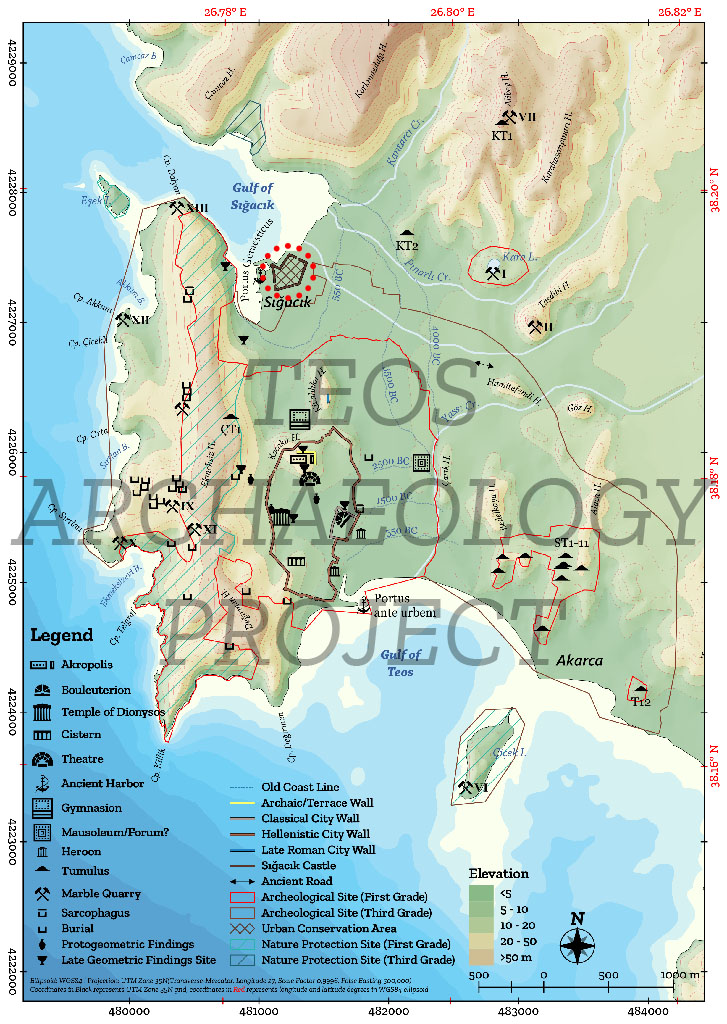Located on the flat plain at the southeast end of the deep Sığacık Bay, Sığacık town is surrounded by a fortified pentagonal fortress wall. It has a small triangular barbican (fortified outpost) supported by three polygonal bastions projecting into the bay on its northwest corner. Except for the eastern wall, all the walls have one arched gate. Large stone blocks from Teos have frequently been reused on the outer face of the wall. The inner face of the wall was built of smaller sized blocks and rubblestone, and the space between the two walls was filled with white lime mortar without any brick dust.

Plan of the Sığacık Castle, 2020 (After Müller-Wiener 1962, figs. 4-5)(Kadıoğlu, 2021, 371, Plan 13)
Since the building inscription of Sığacık Castle has not survived, a dating proposal can be made with the help of the information given by the travellers, the plan, the fortification technique, and the Ottoman archive documents. Despite Piri Reis’ detailed description of Sığacık Harbour in his Kitab-ı Bahriye of 1525, he did not mention a castle, leading to suggestions that the castle was still under construction at the time the map was completed and presented to sultan Suleiman the Magnificent, and before the siege of Rhodes of 1522. Although 18th and 19th century travellers referred to Sığla Castle as having been built by the Genoese, its construction did not start before the last quarter of the 15th century. Since the Ottomans were the sole power in the region during 16th century, it is wrong to refer to Sığla as a Genoese Castle.

Aerial photograph of the Sığacık Castle and its harbour (Kadıoğlu, 2021, 368, Figure 191)

Archaeological map of Teos and its surroundings (Kadıoğlu, 2021, 25, Map 4)
